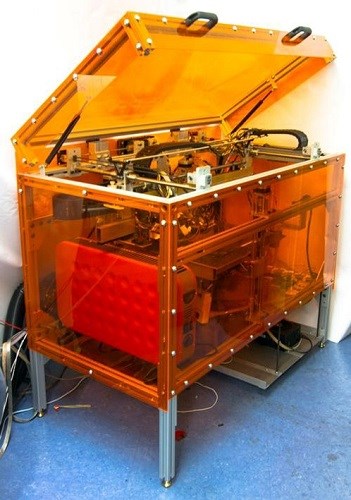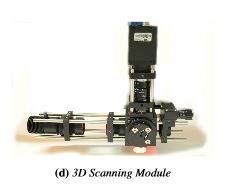MIT's 3D Printer Can Fuse Up to 10 Different Resins in One
The new MultiFab is said to overcome some of the weaknesses of incumbent 3D printers.

The evolution of 3D printers continues at a steady, if not accelerated, pace with one of the latest new developments emerging from MIT’s Computational Fabrication Group. MultiFab is a low-cost (could be built for less than $7000) system that can combine up to 10 different resins in one part and also includes a 3D scanning system to identify and fix errors during production.
Analyst Anthony Vicari of Lux Research, Inc., a company that provides strategic advice and ongoing intelligence for emerging technologies to leaders in business, finance and government, recently reviewed MultiFab.
I’m going to mention Vicari’s concluding critical remark prior to noting some of the key positive implications of this latest development. “MultiFab is no panacea—it is limited to photopolymers and does not solve the problem of poor mechanical performance of printed plastics—but it paves the way for many more researchers to put their minds to solving those challenges.”
That said, Vicari also notes that MultiFab’s enhanced multimaterial capabilities, open platform, and order-of-magnitude cost-reduction potential are high-value, high-impact challenges to the status quo among leading 3D printer companies and offer a clear path to affordably printing polymer parts with a much wider range and combination of properties. “Cheap hardware and materials will then make 3D printing affordable in more applications for making both prototypes and end parts,” he ventures.
Here are the key implications of the MultiFab, as viewed by Lux Research:
• Stratasys, 3D Systems, and EOS need to raise their game. If MIT’s claims hold up, then MultiFab beats incumbent polymer printers on price, performance, and adaptability. Today’s giants will need to follow suit or watch new entrants quickly capture market share.
• Computer vision shows cheap path to higher reliability. MultiFab’s 3D optical 3D monitoring system uses low-cost hardware and standard computer vision techniques to self-calibrate and prevent errors. This increases part-to-part consistency, which has historically been one factor limiting adoption of 3D printing for manufacturing end-use parts.
• Open platforms will accelerate development. Just as the open source RepRap project let to low-cost consumer printers, MultiFab’s open hardware and software platforms will lead to cost reduction, material selection expansion, and more experimentations with new printer design modifications in industrial polymer printers.
Says Lux Research’s Vicari, “As with all new research, MultiFab will need to continue to prove its lofty claims, but early signs look promising. The systems lays bare technological and business model weaknesses that incumbents have been able to avoid confronting for decades.”

Related Content
-
Getting into Plastics Additive Manufacturing? Avoid these Six Common Errors
There are a lot of 3D printing technologies out there, and it’s not uncommon for processors new to additive manufacturing to get tripped up. Here are some typical snafus, along with advice on how to avoid them before you start making parts.
-
3D Printing of Injection Molds Flows in a New Direction
Hybrids of additive manufacturing and CNC machining can shorten tooling turnaround times.
-
Daimler, OMIC Evaluate Wire-Fed DED for Moldmaking
3D printing a core and cavity on machine from Gefertec, followed by machining, allowed for a complete mold tool to be produced in three days.















